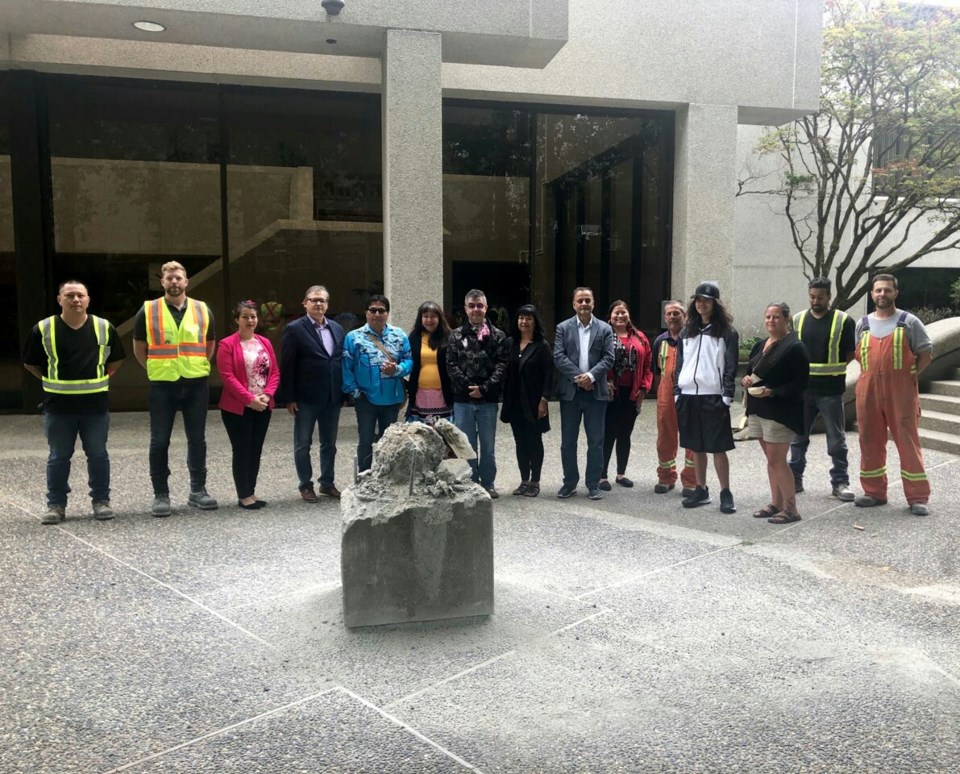The Tsilhqot’in National Government supports a proposal that could see two local landmarks renamed.
On Monday, council unanimously approved a motion by Coun. Chuck Puchmayr to remove the name of Begbie Square and begin a process to identify an appropriate new name for the civic space that’s located in front of the law courts on Carnarvon Street. The motion also asks that the city review the name of Begbie Street.
In May, New Westminster city council supported the removal of the Judge Begbie statue from its spot in front of the law courts.
In a letter to city council, Tribal Chair Joe Alphonse said the Tsilhqot’in National Government fully supports a proposal to rename Begbie Street and Begbie Square.
“Should the City of New Westminster and the local Indigenous community be open to this request, we would be honoured to have these two landmarks renamed to commemorate our fallen war chief Ahan,” he wrote. “We are grateful for the City of New Westminster’s reconciliation efforts to date, particularly the removal of the statue of Judge Begbie this past spring.”
According to Alphonse, Begbie’s legacy is tainted by his role in the wrongful hanging of the war chiefs in 1864 and 1865. He said the chiefs were executed after coming to peace talks, under a flag of truce – something that represents a great betrayal of the Tsilhqot’in people.
“Judge Begbie remains a painful reminder of the violence and oppression that was imposed on the Tsilhqot’in people and Indigenous peoples across the province,” he wrote. “It is our belief that by acknowledging and righting past wrongs, a positive future can be achieved. For this reason, we offer our full support for the proposal to rename these landmarks and applaud the City of New Westminster for continuing to be leaders in reconciliation by confronting the painful chapters of our shared history and taking meaningful steps to build a better relationship for the future.”
Begbie, who was British Columbia’s first chief justice, presided over the 1864 trial in Quesnel of five chiefs, who were convicted and sentenced to death. A year later, Ahan was tried, sentenced to death and hanged in a spot near Begbie Square.
The provincial and federal governments have both apologized for the hangings of the six chiefs. The chiefs have been fully exonerated of any wrongdoing, as they were acting as an independent nation that was engaged in war with another nation when they defended their territory and killed members of a road-building crew.
The motion approved at Monday’s council meeting also asks that the city, through its reconciliation process, find a way to acknowledge, recognize and tell the history of the wrongful conviction and execution of the six Tsilhqot’in chiefs in Qunellemouth (now Quesnel) and New Westminster.
Puchmayr said the hangings had an impact on the judicial system in New Westminster.
“It did have an impact all over British Columbia on Indigenous people,” he said. “I would add that it had an impact all over Canada on Indigenous people as well.”
At Monday’s council meeting, Puchmayr provided council with an artist’s rendering of the hanging of the five Tsilhqot’in chiefs in Quesnel on Oct. 26, 1864, a rendering based on historical accounts of the of hanging made by people who were in attendance.
The rendering shows five chiefs on the gallows, surrounded by members of the Nuxalk, Tsilhqot’in, Secwepemc, Southern Dakelh and Kluskus First Nations. In the foreground is a horse and buggy, which contains blankets.
“What they did was they got Indigenous people to come and witness the execution of the five chiefs. As they left, they gave them blankets so they could go back and communicate to their communities the impacts,” Puchmayr said. “This is very significant. The executions were actually used to try and quell the rights of indigenous people to assert their lands, to oppress and supress them.”



